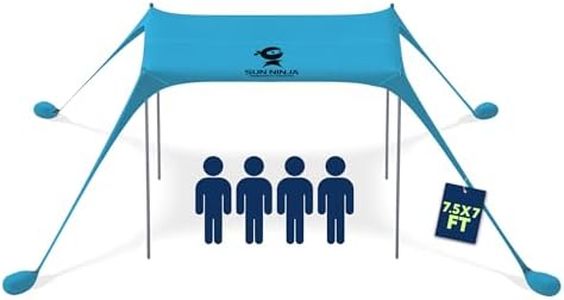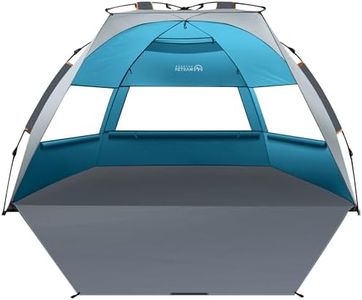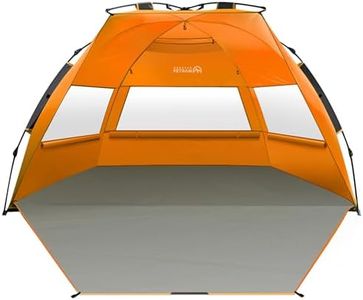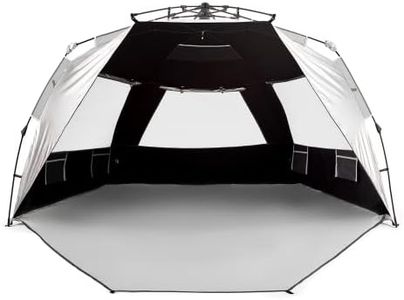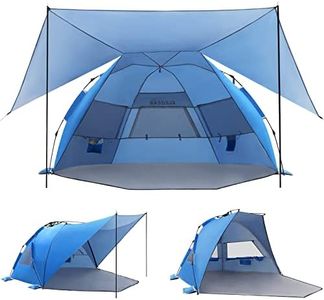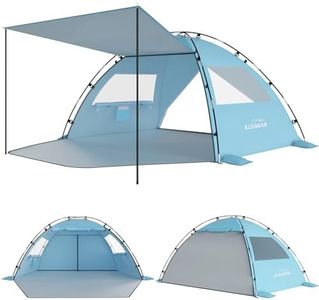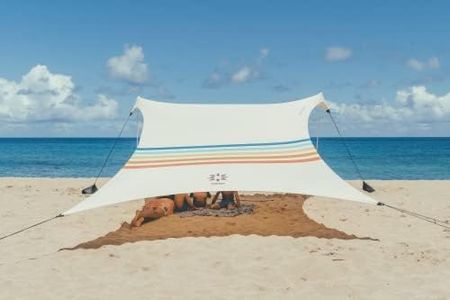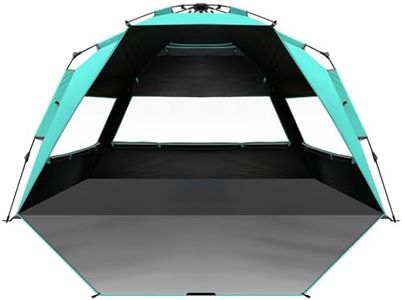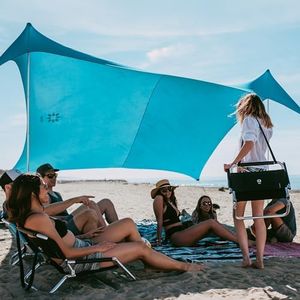We Use CookiesWe use cookies to enhance the security, performance,
functionality and for analytical and promotional activities. By continuing to browse this site you
are agreeing to our privacy policy
10 Best Beach Tents
From leading brands and best sellers available on the web.Buying Guide for the Best Beach Tents
Choosing the right beach tent can greatly enhance your comfort and protection while enjoying the beach. A good beach tent shields you from the sun, wind, and sometimes even rain, making your day by the sea safer and more pleasant. When picking a beach tent, think about how many people will use it, where you'll set it up, and how easy it should be to transport and assemble. It's key to balance convenience with the kind of protection you need, keeping your trip as relaxed as possible.UV ProtectionUV protection indicates how much of the sun's harmful ultraviolet rays the tent can block. This is crucial for preventing sunburn and long-term skin damage, which can happen even on cloudy days. UV protection is often labeled with a UPF (Ultraviolet Protection Factor) number. A UPF of 30 means the tent lets about 1/30th of the UV rays pass through, while UPF 50 blocks even more. In general, a higher UPF number provides better protection. If you or your companions are concerned about sun exposure, look for tents with a high UPF rating to ensure maximum safety for sensitive skin and children.
Size and CapacityThe size or capacity of a beach tent tells you how many people can comfortably fit inside. This ranges from small, one- or two-person tents to larger family-sized options. Choose a smaller tent if you're going solo or as a couple for easier transport and setup. For families or groups, look for tents with enough space for everyone to sit, stretch, and store bags without feeling cramped. Think about whether you want extra room for kids to play or for changing clothes when choosing the right size.
Setup MechanismThe setup mechanism refers to how easy or complicated it is to pitch the beach tent. There are traditional tents with poles you assemble, as well as pop-up tents that unfold almost instantly. Pop-up models are fastest to set up but may not be as sturdy, whereas those with extra poles might take a few minutes longer but offer more stability against wind. If convenience and speed are a priority, go for a pop-up design. If you often face windy conditions or want a tent that stays firm all day, look for more robust setups.
Portability and WeightPortability and weight focus on how easy it is to transport the beach tent from your car to the sand and back. Lightweight tents are great if you have to walk a distance, while heavier or more bulky tents might provide more features but require more effort to carry. Check if the tent comes with a carrying bag and shoulder straps for easier transport. Choose a weight and packed size that matches how far you’ll be carrying it—lighter and compact for long walks, heavier for setup closer to your vehicle.
Ventilation and WindowsVentilation is about how well air moves through the tent to keep you cool and prevent it from getting stuffy. Beach tents often have mesh windows, doors, or panels that you can open or close as needed. If you plan to spend long hours inside, especially on hot days, pick a tent with large mesh openings or adjustable panels for good airflow. This is especially important if you want to avoid the tent becoming too warm or humid.
Wind and Water ResistanceWind and water resistance refers to how well the tent stands up to breezy conditions or unexpected rain. Some beach tents have sand pockets, stakes, or guy lines to anchor them securely to the ground and resist blowing away. Water resistance means the tent material can handle light showers without leaking. If you frequent breezy or unpredictable coastal spots, look for tents with sturdy anchoring systems and water-repellent materials to stay comfortable even if the weather changes unexpectedly.

